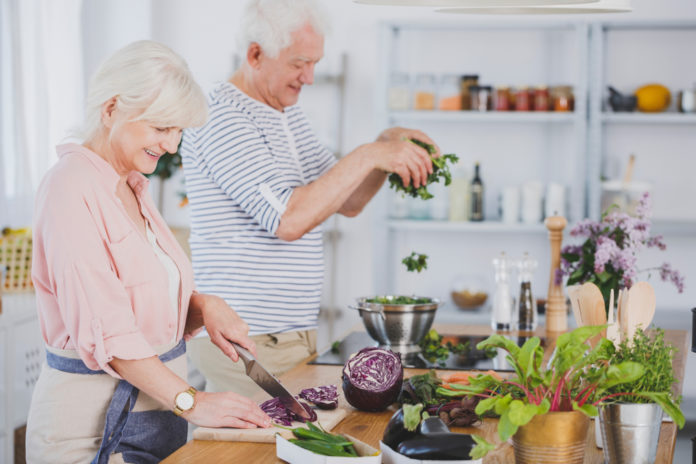Ample fruits and vegetables in the diet is essential throughout the entire lifespan, including in older adults. In fact, seniors who consume more fruits and veggies lower their risk of numerous chronic diseases and are expected to live longer, especially in combination with regular physical activity.
Older adults should consume approximately two cups of fruits and three cups of vegetables each day. But despite the recommendations, the Centers for Disease Control and Prevention (CDC) reports only one in 10 adults get enough fruits and veggies.
While changes in taste, smell, chewing, and swallowing may make the recommendations difficult to meet, you can help increase fresh food for seniors and ensure adequate intake of both fruits and veggies with these nine simple tips!
9 Simple Tips to Add Fruits and Vegetables into A Senior Diet
1. Open the Discussion
First and foremost, ask your loved one their input regarding their diet and make the conversation bidirectional. Discuss whether or not they have difficulty chewing or swallowing them or if their taste seems “off.”
These sort of indices can not only help you increase fruits and vegetables in their diet, but bring to light any potential concerns deserving medical attention.
2. Have Them Available and Convenient
If fruits and veggies are out of sight, they are likely out of mind! So to encourage their intake conveniently, have various assortments cut, prepared, and ready to enjoy.
Having a fruit basket visible on the counter can also inspire their intake, while looking for pre-sliced produce is beneficial if slicing and chopping is a barrier between seniors and their fruit and veggie intake.
3. Try Different Cooking Techniques
Rather than boring the taste buds with the same scoop of peas night after night, shake up the repertoire by trying different cooking techniques, including steaming, grilling, sautéing, stir-frying, and boiling.
You can also soften apples into a smooth, healthy applesauce, free of added sugar, high fructose corn syrup, and preservatives!
4. Mix into Smoothies
While sipping on 100 percent fruit or veggie juices grants valuable nutrients, they are stripped away from their natural fiber content. So to help retain fiber, maintain the sippable appeal, and increase easy-to-digest vegetables, blend up some smoothies!
Smoothies are a tried and true tip to sneak in fruits and veggies, along with supplying adequate protein to preserve muscle mass and strength.
Nutritious and delicious smoothie options include chocolate banana or mint and peach, raspberry, and basil. These 13 smoothies also pack in the veggies (and your loved one will never notice)!
5. Puree into Sauces
Like smoothies, sauces are another way to sneak in veggies. For instance, rather than mixing whole spinach leaves into pasta noodles, puree them into the tomato sauce.
6. Bulk Up Main Dishes
To rev up the nutritional content, bulk up main dishes with veggies. There are numerous ways to do so, including chopped bell peppers into chili and finely diced carrots into soups.
7. Offer Dips
Offering dips is a creative way to jazz up fruits and veggies. Nutritious and delicious dipping duos include carrot sticks and red pepper hummus, apple slices and peanut butter, and cucumber slices and Greek yogurt ranch.
8. Whip Up Some Popsicles
Popsicles are refreshing and convenient but unfortunately, are often loaded with sugar and lack any sort of nutritional value. But by making these irresistible homemade yogurt popsicles, seniors can enjoy what makes that summertime staple so cherished whilst increasing fruit, veggie, and protein intake!
9. And an Avocado and Banana “Ice Cream”
Rather than being packed with refined sugars, this avocado and banana “ice cream” is naturally sweetened and contributes to daily fruit recommendations.
You and your loved one can also make it an ice cream social and invite other friends and family members!






